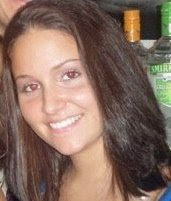The objective of our project is to bring forth the issues that are experienced by the people in our community. We want to help the student body understand the diversity of our neighborhood and become more aware and in-touch with our surroundings. We chose C-Town as our location because it reflects the diversity of the area and bridges the gap between the university and the Spanish community. It sits right on the border of Rutgers and Locals.
Our first step in diving into C-Town and its roots was to go there and observe. We began to look at each individual and analyze their every move to learn more about them. How they arrived at C-Town, how they were leaving, items they bought, who was with them etc. When we first walked in, a poor African Amercian woman approached us. At first I thought she was just being polite as she complimented me saying I was beautiful, but then I realized her true intentions. She asked me for money. Once I realized she was only flattering to me to get my money, I became insulted. This moment meant a lot to me. It showed me the ignorance of both her and I. Because I was a white, young, college-looking student, she assumed I had money to give her. Out of every single person in C-Town at the moment she judged me and decided that I was the most likely to give her money. Then just a few days later I thought of this woman again. I was walking through C-Town thinking of items I needed, or wanted. I picked up anything that caught my eye and even called my friends to see if they needed anything, money didn’t even cross my mind, that is, until I left. I thought of that woman again and how she showed her ignorance when she judged me asking for my money, and I showed my ignorance walking in there and not even thinking twice about prices or valuing the fact that I had money to spend. I didn’t think of what it would be like to be someone else’s shoes and not have enough money to buy the things I want. This is when I realized that putting a spotlight on the diversity and differences amongst our community would be a very affective project, at least for me if not for everyone.
We began to interview people hoping we would find out intriguing facts, but this did not work at all. Not one person wanted to talk to us no matter how hard we tried. I realized that the reason for this was because we were very much separated from the people we were trying to talk to. We could not relate, at least we did not see any relations on the surface. When I approached one woman, it quickly became apparent that she did not know what I was saying. She was a young Spanish mother with two young children and did not know how to understand or speak English. In a grocery store with all English labels and announcements in English, it must be very hard for her to manage. She sent one of her sons to get her husband when I approached her because he spoke better English, although he only knew a few words. At this point I knew that this life inside C-Town needed to be exposed, so we went to work.
The first step was to break into groups and within those groups have people inside C-Town and people outside. The people outside have a map that shows where all the grocery items are located in the store. They also have a grocery list of the person they are being. They will be given a circumstance, such as a budget or time constraint to help add to the reality of this persons life. The grocery list is going to be in Spanish to show the language barrier between the people that shop there and the place itself. They will be talking through their cell phones and working as a team with the people inside to find these items. Once they find the items, there will be a note card giving a small explanation of why it is this person wants this item, and therefore shedding a little light on who this person really is. When they find all the items they will meet outside and answer a set of questions as a group. These questions will provoke thought and hopefully provoke emotion.

I like how you compared aspect from your project to your life, it made it more realistic when reading about it esp since I wasnt able to participate in it first hand
ReplyDeleteI thought your project was successful in bringing up the issues of the people who shop at c-town.
ReplyDelete